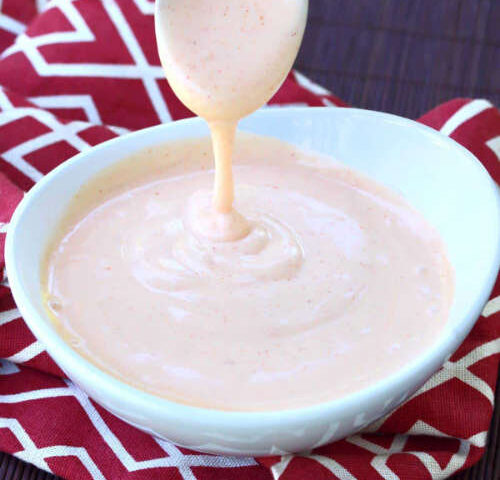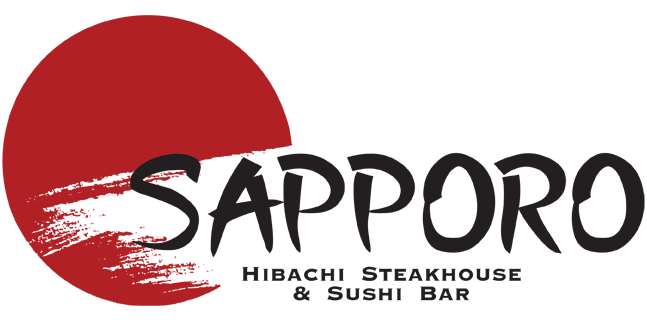
America’s Love Affair with Yum Yum Sauce
Picture this: You’re seated at a Japanese steakhouse, eagerly awaiting the sizzling spectacle that’s about to unfold before your eyes. The chef arrives, wielding sharp knives and spatulas, ready to dazzle you with culinary acrobatics.
But before the first shrimp tail flies, you spot the iconic duo of sauces – a dark, savory one and a creamy, pinkish-white concoction known as yum yum sauce. Little do you know, this unassuming condiment is poised to steal the show.
In the bustling kitchens of American Japanese steakhouses, a condiment was born that would soon become a staple on dining tables across the country. This creamy, tangy sauce, often associated with establishments like Sapporo Hibachi Steakhouse, has woven its way into the fabric of American dining culture.
Yum yum sauce, also known as white sauce, shrimp sauce, or sakura sauce, has become a beloved staple at Japanese hibachi restaurants across America. Its tangy, slightly sweet, and creamy flavor profile has won the hearts (and taste buds) of diners from coast to coast.
But what exactly is this magical sauce, and how did it make the leap from steakhouse tables to grocery store shelves?
Let’s delve deeper into the journey of this sauce from a simple condiment to a household name, exploring its origins, how to craft it at home, and its versatile uses in the culinary world.
Yum Yum, A Culinary Phenomenon
Originating from Japanese steakhouses in the United States, this sauce quickly became synonymous with an enhanced dining experience. It’s not just any sauce; it’s a conversation starter, a dip that transforms a meal into a memorable experience, especially at places like Sapporo Hibachi Steakhouse.
The origins of yum yum sauce are a bit murky, but one thing is clear – it’s not actually a traditional Japanese condiment. In fact, you’d be hard-pressed to find it in Japan at all. According to food experts, this sauce is a purely American invention, crafted specifically for the tastes of Western diners.
As Japanese hibachi restaurants gained popularity in the 1970s and 80s, so did the addictive allure of yum yum sauce. Diners couldn’t get enough of the stuff, often requesting extra containers to take home.
It wasn’t long before enterprising restaurateurs saw an opportunity to capitalize on this growing obsession.
What sets this sauce apart is its perfect balance of flavors. The ingredients are straightforward, but the flavor profile is complex, making it a beloved addition to a variety of dishes. Beyond its taste, the sauce has a way of bringing people together, making it a staple at family dinners and social gatherings.
Its versatility and distinctive flavor have contributed to its rise in popularity, securing its place in kitchens across the nation. The secret to its widespread acclaim lies not only in its taste but also in its ability to complement a wide range of dishes, from grilled meats to vegetables, making it a versatile condiment.
This adaptability has led to a surge in homemade versions, with enthusiasts experimenting to recreate or even enhance the original recipe. Online forums and cooking websites are awash with variations of the Yum Yum sauce, each adding a personal twist to the traditional mix of ingredients such as mayonnaise, tomato paste, sugar, and a blend of spices.
This communal effort to perfect the sauce underscores its significance in culinary culture, turning it into a phenomenon that transcends geographical boundaries. For more insights into its culinary impact, visit this source.
With its creamy texture and sweet, tangy flavor, Yum Yum sauce continues to captivate the taste buds of many.
The Sauce in Japanese Steakhouse Kitchens
Chefs at high-end restaurants, including Sapporo Hibachi Steakhouse, have embraced this sauce, incorporating it into their culinary creations. Its inclusion in fine dining menus speaks to its widespread appeal and adaptability in various culinary contexts.
This sauce has become very special, not just something you add to your food for extra flavor, but something that makes the food feel more exciting and fancy. It can make a simple dish taste amazing, whether it’s poured over a juicy steak or mixed into a fun appetizer.
It’s like this sauce has a magic touch that makes every meal better. And who wouldn’t want their food to be remembered as “that super yummy dish with the special sauce” from Sapporo Hibachi Steakhouse?
Crafting the Sauce
Homemade Creation
Creating this sauce at home is an adventure in flavor. Starting with mayonnaise for creaminess, tomato paste for tanginess, a little sugar for sweetness, and a dash of paprika for heat, the result is an irresistible sauce.
The beauty of making it at home is the ability to adjust the ingredients to suit your taste preferences, whether you prefer it spicier or with a hint more sweetness.
To create your own batch of Yum Yum deliciousness, simply whisk together mayonnaise, ketchup or tomato paste, melted butter, sugar, rice vinegar, garlic powder, and paprika until smooth. For a spicy version, add a dash of your favorite hot sauce or sriracha.
Let the sauce chill in the fridge for at least 30 minutes to allow the flavors to meld and intensify.
In less than 10 minutes of prep time, you’ll have a homemade Yum Yum Sauce ready to drizzle on everything from hibachi-style grilled meats and seafood to fried rice, french fries, burgers, and more. Plus, you can easily customize the recipe to suit your taste preferences, whether you like your sauce sweeter, tangier, or spicier.
The Store-Bought Versus Homemade Debate
While crafting the sauce at home is rewarding, sometimes a quick fix is needed. Brands like Terry Ho’s offer a taste close to what you’d find at Sapporo Hibachi Steakhouse. However, the homemade version allows for a freshness and depth of flavor that store-bought versions struggle to match.
Buying Yum Yum Sauce from stores offers several advantages. First and foremost, it’s incredibly convenient. Rather than gathering a variety of ingredients to make it from scratch, purchasing it ready-made saves time and effort, especially for those with busy lifestyles.
Store-bought Yum Yum Sauce also provides consistency in flavor and quality, ensuring that you get the taste you love every time.
Yet, for those who lean towards culinary adventures, crafting Yum Yum sauce from scratch is an act of love and creativity. The homemade process not only unlocks the door to customizing the sauce to personal taste preferences—be it tweaking the sweetness, dialing up the heat with a dash more paprika, or achieving the perfect creamy texture—but also imbues dishes with a freshness that jarred sauces find hard to compete with
Beyond Traditional Uses
This sauce isn’t limited to sushi or hibachi. Its creamy texture and unique flavor make it an excellent addition to sandwiches, wraps, and even pizzas. For those who enjoy experimenting in the kitchen, it can be a secret ingredient that adds an unexpected twist to traditional recipes.
Yum Yum sauce isn’t just for sushi or hibachi anymore; it’s like a kitchen superhero that can make lots of different foods taste amazing with its creamy, yummy flavor. It’s a bit tangy but also a little sweet, which makes it a perfect match for not just Japanese food but all kinds of dishes you might want to try.
Expanding the Flavor Horizon
International Cuisine Pairings
Yum Yum sauce isn’t just a one-trick pony; it’s a globetrotting condiment that can bring a little extra magic to dishes from all corners of the world. Picture it: a dollop of this creamy, tangy sauce on top of a spicy Mexican taco, where it cools the heat and adds a creamy texture, making each bite even more delicious than the last.
Instead of reaching for sour cream, try Yum Yum sauce for a change and discover a new favorite taco topping.
Healthier Alternatives
For those mindful of their dietary intake, the sauce can be adapted to fit healthier eating habits. Using Greek yogurt or a plant-based mayonnaise as the base offers a lower-calorie alternative without compromising on taste.
If you’re keeping an eye on what you eat but still want to enjoy the deliciousness of Yum Yum sauce, don’t worry! You can tweak the recipe to make it healthier without losing any of the taste you love.
By using Greek yogurt or plant-based mayonnaise instead of regular mayonnaise, you can cut down on calories. Greek yogurt adds a nice tang and creaminess, plus it’s packed with protein.
Plant-based mayonnaise is great for those who want a vegan option or are looking to reduce their intake of animal products. Both of these swaps keep the sauce light and tasty, ensuring you can enjoy your favorite flavors in a healthier way.
Enriching the Culinary Experience
The Art of Sauce Pairing
Understanding the art of pairing can elevate any dish. This sauce pairs wonderfully with grilled meats, seafood, and vegetables, offering a creamy counterpoint to smoky flavors. Its versatility also shines in casual dining, where it can transform simple snacks into gourmet treats.
Frequently Asked Questions
What’s the shelf life of homemade sauce?
When stored properly in the refrigerator, it can last up to a week. Ensuring it’s in a tightly sealed container is key to maintaining its freshness.
Can it complement non-Japanese dishes?
Absolutely! Its versatility makes it a favorite among chefs and home cooks alike, suitable for a wide range of dishes beyond its Japanese steakhouse origins.
In Conclusion
The story of yum yum sauce is a uniquely American tale, one that speaks to our love of bold flavors, cultural fusion, and the entrepreneurial spirit. What began as a simple sauce served at Japanese steakhouses has evolved into a beloved condiment enjoyed by millions.
This sauce is more than just a condiment; it’s a testament to the creativity and innovation found in American kitchens. Whether you’re enjoying it at a restaurant like Sapporo Hibachi Steakhouse, crafting your version at home, or exploring its potential in international dishes, it’s sure to add a unique touch to your culinary creations.
So the next time you find yourself reaching for that little cup of creamy, pinkish-white goodness, remember the unlikely journey that brought this sauce from hibachi grills to your home kitchen. And don’t forget to say “yum yum!” as you savor each tangy, delicious bite.
